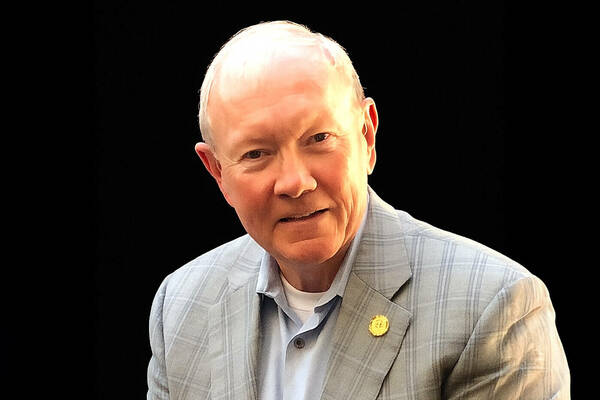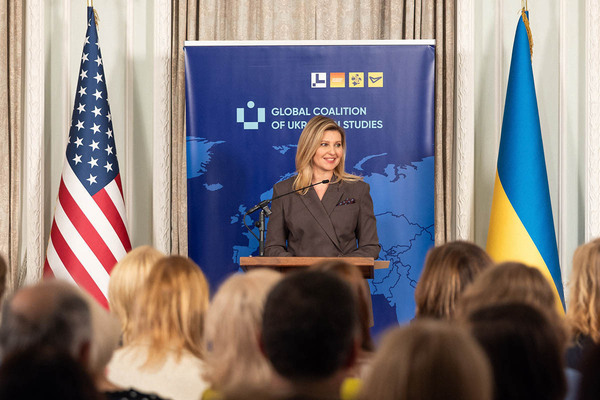When countries hide their true public debt, they hurt themselves, their citizens and their lenders

Economists from the International Monetary Fund (IMF) recently announced that global public debt would soon collectively catch up to the worldwide gross domestic product (GDP), likely matching it by 2030. New research from the University of Notre Dame suggests that this could happen even sooner, thanks to countries’ hidden debts.
These hidden debts — debt that was already in a government’s books but had not been disclosed — are the result of malicious intent or corruption, fear of scrutiny by lenders or simple accounting errors. Too much debt prevents governments from investing in the things its citizens need most, including infrastructure, health care and education.
Monitoring a country’s debt level is also top of mind for investors and analysts who want to ensure the lendability and dependability of a borrower.
But revelations of hidden debt have dire consequences for those misreporting borrowers and those who lend to them.
According to a new study from an economist at the University of Notre Dame, misreported debt can lead to higher interest rates for borrowers and lower recovery rates for lenders. These findings suggest indirect adverse effects on global financial stability and consumer welfare.

Cesar Sosa-Padilla, associate professor of economics and a faculty fellow at the Kellogg Institute for International Studies, part of Notre Dame’s Keough School of Global Affairs, along with co-authors from the World Bank, the University of Hamburg and the University of Duisburg-Essen, authored a working paper published by the National Bureau of Economic Research titled “Hidden Debt Revelations.” The researchers used the World Bank’s International Debt Statistics database to measure the accuracy of reported debt levels spanning more than 50 years for 146 developing and emerging market countries.
The researchers tracked revisions to the World Bank’s external-debt statistics database, which compiles reports from all countries that borrow from foreign lenders, from 1970 through 2022. Each revision showed discrepancies when compared to the previous year’s data, indicating an underreported or overreported debt amount. Their research method, which also included digitizing records that preceded online capabilities, revealed several facts regarding the size, timing and characteristics of hidden debt, according to Sosa-Padilla.
They found that public debt is consistently and pervasively underreported — by an average of 1 percent of each country’s GDP, totaling $1 trillion of hidden debt across all countries and years and equating to more than 12 percent of total foreign borrowing by all countries in the study sample.
“Hidden debt is large and common,” the researchers wrote, with 70 percent of all debt stocks reported to the World Bank requiring amendments at least once after their initial publication. And most of those revisions, Sosa-Padilla explained, involve an adjustment upward versus downward when reporting true public debt — indicating that underreporting occurs more often than not.
These hidden debts can only be counted when they are revealed through a revision, so it is likely that some countries’ debts are actually larger than they are willing to admit, he said.
“We find that public external debt is consistently underreported, and that this phenomenon is more prevalent in countries with weak institutions,” Sosa-Padilla said.
The reporting discrepancies were most often found during bad economic years, according to Sosa-Padilla. “The accumulation of debt that was not reported usually happened during boom years,” he said, “while the revelations of that hidden debt occurred during bad economic years.”
These hidden debt revelations typically occurred when the government’s books came under close scrutiny due to loan defaults or during audits from the IMF, a multilateral organization set up to assist countries on the brink of financial crisis. The United States is the largest shareholder in the IMF.
The researchers also found that hidden debt can have adverse implications for both creditors and borrowers. For creditors, it means larger creditor losses and a lower recovery rate on loans provided to a country that is further in debt than expected. In turn, having less chance to recoup funds during the renegotiation process leads creditors to pass along less-advantageous borrowing terms to those countries seeking loans.
“Theoretically, when a country has a history of hiding its debt, it not only faces higher interest rates from foreign lenders, but it also has less ability to smooth out consumption or stabilize fluctuations in its economy,” Sosa-Padilla explained. “Essentially, it leads to a more volatile path of consumption levels, which can trickle down to affect consumer households.”
For American consumers in particular, Sosa-Padilla said that hidden debt revelations make investing in foreign bonds much riskier than originally thought. Also, as one of the IMF’s largest contributors, U.S. funders may take extra care when considering providing funds to countries that consistently misreport their economic health.
Bonds, which are publicly traded, and World Bank-provided loans have fewer incidents of misreporting as those debts are consistently disclosed. The largest revisions to yearly debt levels occur within less transparent markets, such as with borrowed funds coming from private lenders in the form of bank credit or from governments as bilateral loans.
On this point, and using a quantitative model of sovereign borrowing and default, the researchers took into account the amount of oversight and transparency that is required when it comes to monitoring each country’s forthrightness in debt reporting, saying that “only countries with strong fundamentals and low hidden debt levels benefit from increased transparency” while countries with high levels of hidden debt are “likely to find exposure to greater scrutiny to be costly.”
For that reason, the study’s findings suggest that transparency policies are best implemented during positive economic times versus times of financial crisis.
“Analysts in both asset pricing and country surveillance should take into account that debt statistics tend to increase after their initial publication, which makes default more likely,” Sosa-Padilla concluded.
Contact: Tracy DeStazio, associate director of media relations, 574-631-9958 or tdestazi@nd.edu
Latest ND NewsWire
- Eck Institute investigator to strengthen postpartum care for Indiana mothersYenupini Joyce Adams, associate professor of the practice and maternal health lead for the Eck Institute for Global Health at the University of Notre Dame, is partnering with Beacon Health System to pilot a new, first-of-its-kind postpartum care model in the South Bend-Elkhart community.
- Gen. Martin Dempsey to speak at Notre Dame Forum event on ‘Hope, Global Stability and the Role of the United States’Gen. Martin Dempsey, the retired 18th chairman of the Joint Chiefs of Staff, will join University President Rev. Robert A. Dowd, C.S.C., for a fireside chat at 4 p.m. Friday (Oct. 10), as part of the 2025-26 Notre Dame Forum. The discussion, titled “Hope, Global Stability and the Role of the United States,” is part of the exploration of this year’s Notre Dame Forum theme, “Cultivating Hope.” It will take place in Rooms 215/216 of McKenna Hall and will also be livestreamed. The event is free and open to the public.
- University of Notre Dame joins the Global Coalition of Ukrainian StudiesThe University of Notre Dame has joined the Global Coalition of Ukrainian Studies after signing a memorandum of cooperation, formalized Sept. 24, at the Ukrainian Institute of America in New York City. Notre Dame joined four other American institutions that were also publicly welcomed to the coalition at this event: Arizona State University, Columbia University, Manor College and the Shevchenko Scientific Society.
- One year later, Inauguration Build a ‘dream come true’ for Habitat familiesOne year later, work on Inauguration Build 2024 is complete, offering shelter and so much more to five local families.
- Alumni Association and YoungND honor 2025 Domer DozenThe Notre Dame Alumni Association announced its 2025 Domer Dozen cohort, honoring 12 graduates ages 32 and younger for excellence in their contributions in learning, service, faith and work — the core pillars of the association’s mission.
- Faculty receive prestigious early career awards from National Science FoundationDuring the 2024-25 academic year, four researchers in the University of Notre Dame’s Colleges of Engineering and Science received early-career awards from the National Science Foundation.













